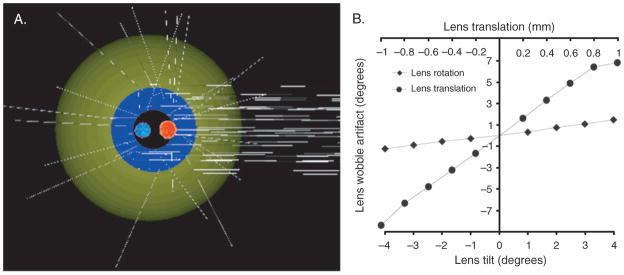Figure 11.
(A) A ray tracing eye model (Advanced Human Eye Model, AHEM, Breault Research Organization) was used to model the fourth Purkinje image shifts for a certain range of lens translations and tilts. The relative positions of the Purkinje images (red: P1; blue: P4) were identified so their movements could be measured and quantified. (B) Ray tracing analysis of movements of P1 and P4 with either lens tilt or lens translation shows the extent of lens wobble artifact in degrees. For instance, to achieve a lens wobble artifact of ±1°, the lens needs to either translate ±0.125 mm or tilt ±3°.

